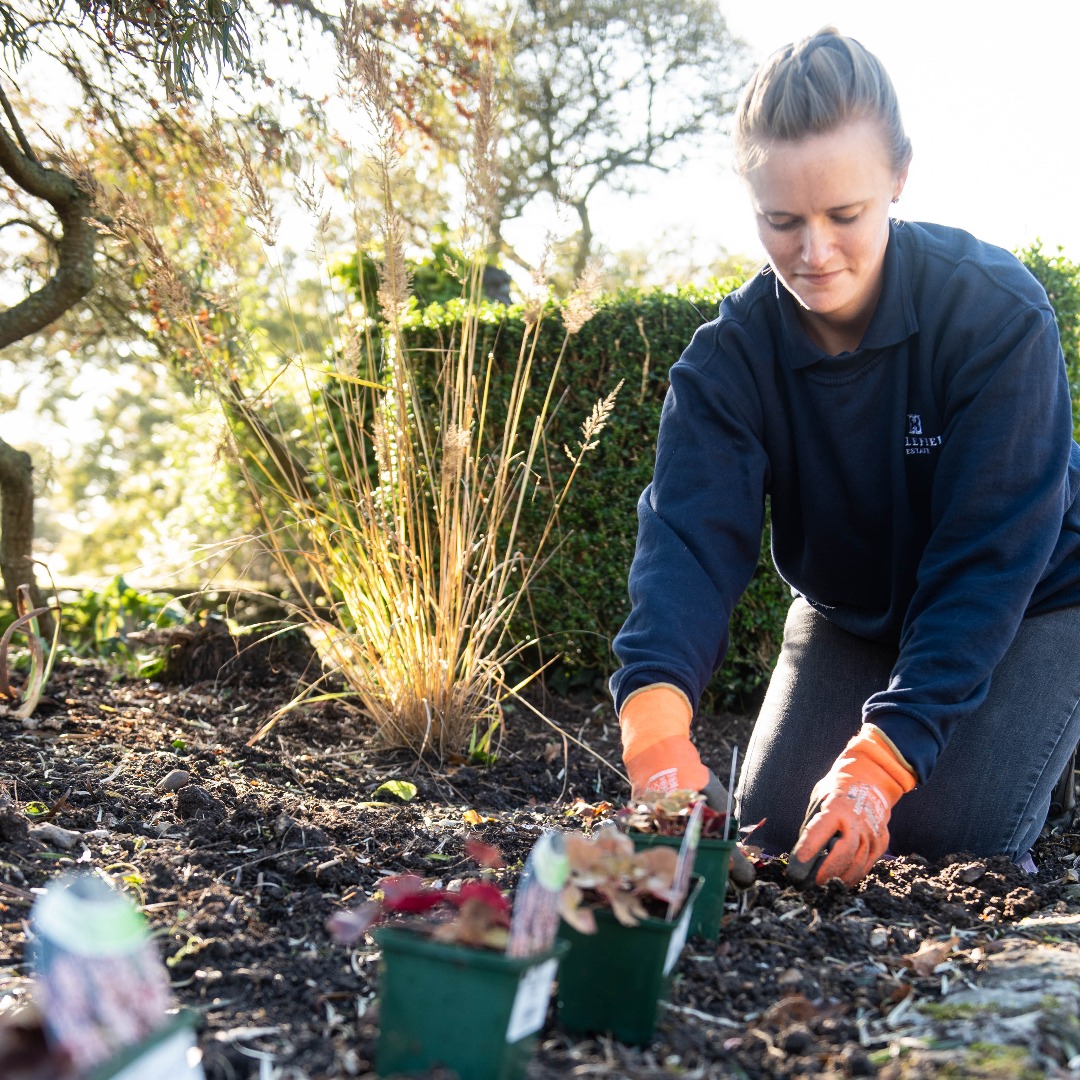Category
As we move into the autumn and winter months, it can be easy to neglect your garden – but it is the perfect time of year to prepare to ensure plenty of life and colour come spring and summer.
Englefield Estate Head Gardener, Sue Broughton, shares tips on preparing your garden for winter. Download Sue's tips as a pdf for you to use at home.
Begin with bulbs
The autumn and winter months are ideal for planting bulbs to ensure a bright pop of colour in the springtime.
Consider the visual impact – think about the number of bulbs and variety you’ll need to make the best use of your space.
Beware… rabbits and squirrels seem to have an appetite for bulbs, so plant them as deep as possible! Or, put them in pots before planting out the growing plant. The recommended depth is three times the bulb size. Tulips can be planted up to 25cm deep, daffodils should never be planted deeply otherwise they might never flower.
Choose the best quality and the largest size bulb you can afford for the best results year after year.
Once bulbs have flowered, remove the head to allow energy to return to the bulb from the leaves and stem as they die back.
But what types should you choose?
Daffodils make for a beautiful sight in a woodland setting and garden borders. White varieties can light up a shaded area and yellow flowers are a cheerful beacon after a cold winter.
Alliums, although belonging to the same family as the onion family, are much more attractive! They are best replanted each year but can last for two years. They generally become smaller each year. Allium hollandicum is a particular favourite of mine as it naturalises well and has a vibrant purple colour and impressive rounded heads.
The imperial fritillary produces bell shaped flowers in a variety of colours. They need to be planted at least 30cm down. They make excellent plants for pots, planted in a 15-20cm pot by the end of October.
Tulips can be planted as late as January but daffodils will flower best if planted no later than November. Fritillary imperialis are best planted in early autumn.

Gardener Caroline prepares the beds.
Mulching borders
Whilst the ground is still warm enough, consider mulching the borders so that the weeds are suppressed, and the moisture and warmth is retained in the soil. Mulching is the process of covering the soil of flowerbeds with another material, such as bark or compost.
There is no need to wait for when the plants are prepped for winter, weed the beds then begin to mulch! If you wait and mulch in very cold weather, this cold is sealed in and it will take longer for the ground to warm up in the spring, and therefore longer for the plants to begin to grow.
Top tip #1: If you want to improve the nutrient level, use compost. If you want to suppress weeds and help retain moisture next year, use leaf mulch.
Top tip #2: A thick layer of at least 5cm but up to 10cm is ideal. Avoid the mulch touching the base of shrubs which will cause rotting.
Top tip #3: Evenly spread the mulch to give a well-tended appearance to your garden.
Love your lawn
Autumn, September specifically, is the ideal time to give your lawn some love and attention, and it’s not too tricky to do yourself.
- Prior to applying the lawn treatment, scarify – this means to mechanically remove the surface thatch from a lawn, or you could also rake over it. This removes the thatch build up and gently tears the roots of the grass so that it puts out new roots horizontally, extending its range, as well as removing moss.
- Next, mow over your lawn, best done with a grass-collecting mower so as to gather up the thatch.
- Apply a weed, feed and moss killing treatment formulated for Autumn application.
- For best results use markers on the lawn (sports markers are good for this) walking between them wheeling the applicator to get an even distribution. This is very important as too much and the lawn will be damaged, too little and the effect of the treatment will be diminished.
Download Sue's tips as a pdf for you to use at home.